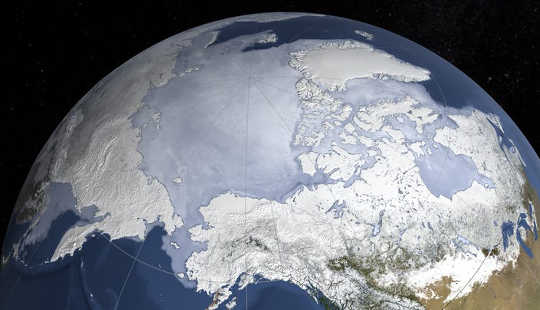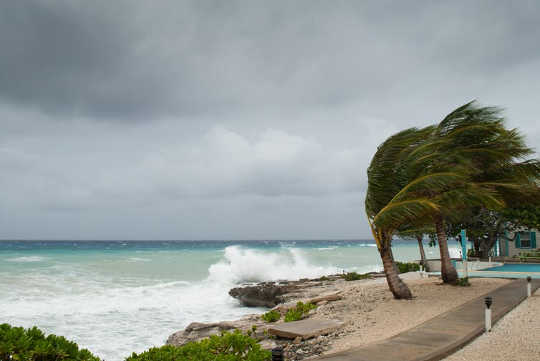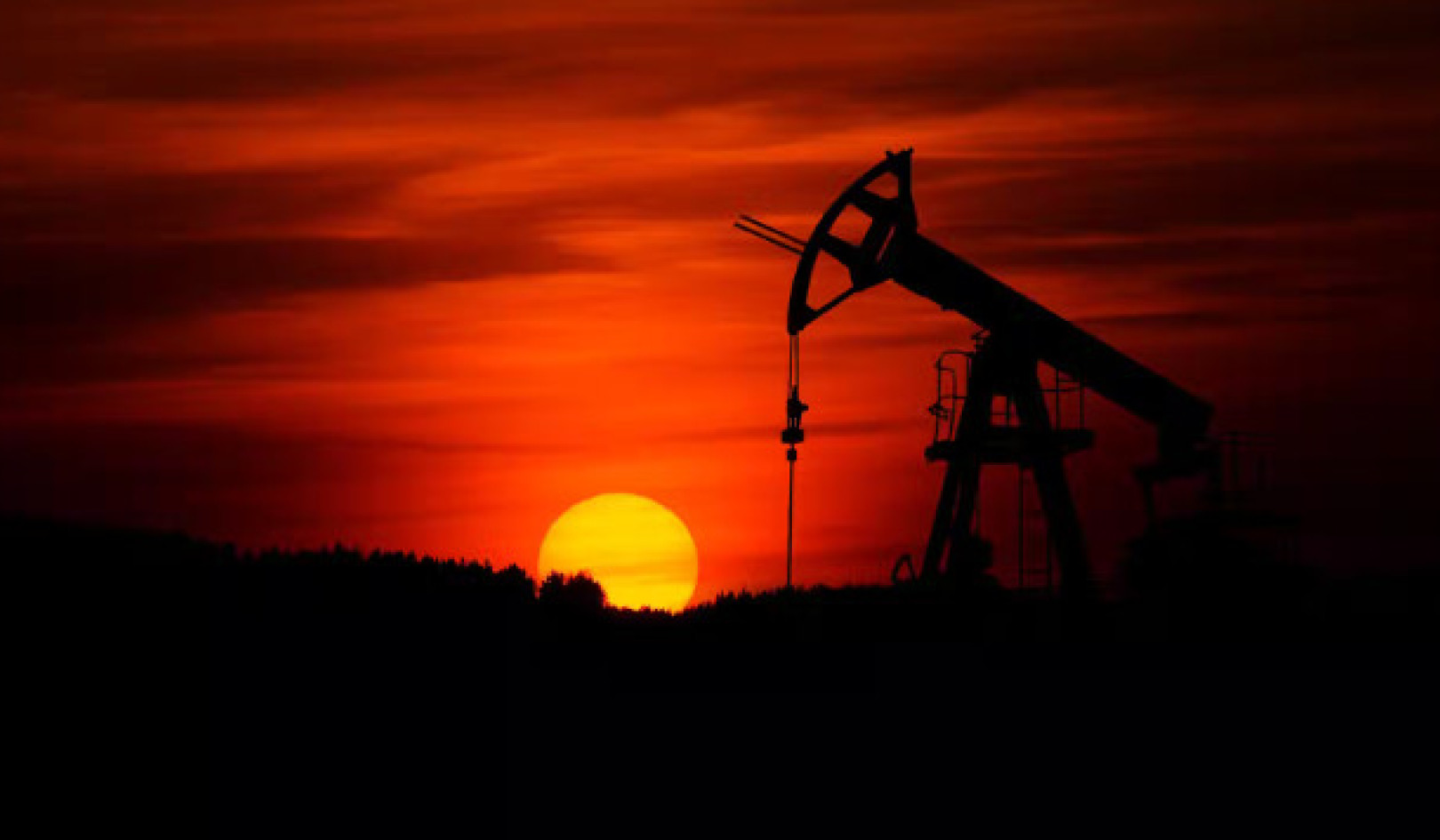
elRoce / shutterstock
Os cientistas climáticos de todo o mundo têm falado: se quisermos limitar o aquecimento global induzido pelo homem a 1.5? provavelmente podemos. Mas será difícil, dado o ponto de partida.
Essa é a conclusão de um novo relatório by the UN’s Intergovernmental Panel on Climate Change (IPCC). The focus on 1.5? is the result of years of international negotiation. Starting in 1994, a central aim of the UN’s climate change efforts (the Framework Convention on Climate Change, or UNFCCC) was to stabilise greenhouse gas concentrations at a level that would “prevent dangerous anthropogenic interference with the climate system”. Much was written on what this meant, particularly the word “dangerous”.
Os impactos negativos das mudanças climáticas ocorrem em um continuum, e definir um ponto no qual a mudança climática se torna perigosa é difícil e contencioso. Por outro lado, as negociações sobre mudanças climáticas são difíceis sem que algum alvo trabalhe.
Fifteen years later, the UNFCCC’s Copenhagen Accord introduced a 2? target, and its 2015 Acordo de Paris was even more specific: it “aims to strengthen the global response to the threat of climate change … by holding the increase in … temperature to well below 2? above pre-industrial levels and pursuing efforts to limit the … increase to 1.5?”.
O IPCC fornece assessoria científica à UNFCCC, que faz a política, e o próprio IPCC nunca declarou uma meta de temperatura. No entanto, lista os riscos das alterações climáticas usando cinco “motivos de preocupação”. Estes incluem impactos como “ecossistemas e culturas únicos e ameaçados” (como recifes de corais) e “eventos climáticos extremos”, cada um dos quais é classificado em uma escala de “indetectável” a “muito alto”. O mais recente do IPCC (2014) Quinta avaliação of the scientific evidence found that at around 1.5? warming there was a transition de moderado a alto risco para ecossistemas e culturas ameaçados e para eventos climáticos extremos. Portanto, há coerência entre as avaliações de Paris e do IPCC.
 A mudança climática tornará alguns tipos de climas extremos mais comuns. Drew McArthur / Shutterstock
A mudança climática tornará alguns tipos de climas extremos mais comuns. Drew McArthur / Shutterstock
The Paris Agreement asked the IPCC to report on the impacts of global warming of 1.5?, and this new publication is the result. Its tone is not “we must avoid 1.5? warming”, as you might think from many commentators, but more “if we want to avoid 1.5? warming, this is what must be done”. The report contrasts the impact of 1.5? and 2? warmings, giving information on what would be gained by the extra effort needed to limit warming to 1.5?.
As the IPCC’s reports are largely based on a critical assessment and synthesis of published scientific papers, many of its latest conclusions are unsurprising. There are many well recognised uncertainties in understanding climate change - for instance, even if we set a course aiming to hit 1.5? (which is mostly determined by future CO? emissions), we could end up hitting, say, 1? or 2? instead. The report provides uncertainty ranges in its estimates and confidence levels, based on expert judgement.
The new report tells us that human activity has already caused about 1? of global warming, while at the present rate of warming (0.2? per decade) we’ll hit 1.5? by about 2040. National pledges made as part of the Paris Agreement still mean we are on course for warming of about 3? by 2100, meaning four of the five “reasons for concern” would then be in the high to very-high risk category.
Achieving the 1.5? target will require anthropogenic CO? emissions to decline by 45% by 2030 (relative to 2010). By 2050, they will need to reach “net zero” - any further CO? emissions due to human activity would then have to be matched by remoção deliberada of CO? already in the atmosphere, including by planting trees. Net zero would have to occur by around 2075 to meet a 2? target.
 Um projeto de reflorestamento na Tailândia. Somrerk Witthayanantw / Shutterstock
Um projeto de reflorestamento na Tailândia. Somrerk Witthayanantw / Shutterstock
Many illustrations are given for the difference between 1.5? and 2? worlds. At 1.5?, summertime Arctic sea ice is projected to disappear once per century, compared to once per decade at 2?; 8% of plants that have been studied would lose half their climatically-suitable area, compared to 16%; sea level rise would be 10cm less (with 10m fewer people impacted at today’s population levels); and while coral reefs might decline by a further 80% at 1.5?, they could virtually disappear at 2?.
The report identifies various routes by which emissions cuts would limit warming to 1.5?; each makes assumptions about future changes in, for example, economic strategy, population growth and the rate at which low carbon energy is adopted. The IPCC recognises the challenges are “unprecedented in scale” but notes, for example, “the feasibility of solar energy, wind energy and electricity storage mechanisms have substantially improved over the past few years”.
The report is sensitive to the fact that changes required to meet 1.5? must be consistent with the UN’s wider metas de desenvolvimento sustentável. Limitar a mudança climática ajudará a atingir metas associadas à saúde, energia limpa, cidades e oceanos. Mas há potenciais impactos negativos em outros (pobreza, fome, água, acesso à energia) “se não forem cuidadosamente gerenciados”.
Então, onde é o próximo? É claro que as conclusões serão amplamente debatidas em muitos níveis, mas os olhos estarão voltados para a resposta da UNFCCC em sua próxima reunião, em Katowice, Polônia, no início de dezembro.![]()
Sobre o autor
Keith Shine, Professor de Meteorologia e Ciência do Clima, Universidade de Reading
Este artigo foi republicado a partir de A Conversação sob uma licença Creative Commons. Leia o artigo original.
Livros relacionados
at InnerSelf Market e Amazon






















